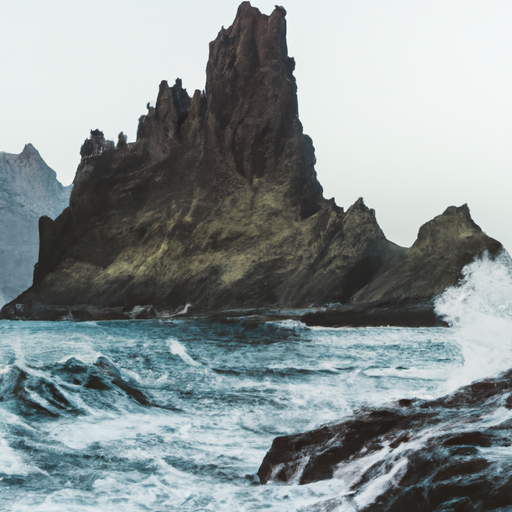What Happens at Oceanic-Continental Convergent Plate Boundary: A Fascinating Insight
The oceanic-continental convergent plate boundary is a captivating geological phenomenon where two tectonic plates collide, resulting in various fascinating processes and landforms. In this article, we will explore what happens at this boundary and delve into the intriguing insights it offers.
At an oceanic-continental convergent plate boundary, two types of lithospheric plates interact: the denser oceanic plate and the less dense continental plate. As the oceanic plate subducts beneath the continental plate, a series of remarkable events take place.
Subduction and Volcanic Activity
One of the significant outcomes of this convergent boundary is subduction. The denser oceanic plate sinks beneath the lighter continental plate due to its higher density. This process creates a subduction zone, where the oceanic crust is forced into the Earth’s mantle.
As the oceanic plate descends into the mantle, it generates intense heat and pressure. This heat causes the release of volatiles, such as water and carbon dioxide, from the subducting plate. These volatiles rise into the overlying mantle wedge, triggering partial melting.
The molten rock, or magma, produced by this melting rises towards the surface, forming a chain of volcanoes known as a volcanic arc. These volcanic arcs are often characterized by explosive eruptions and the formation of composite volcanoes, which are cone-shaped mountains composed of layers of lava and volcanic ash.
Earthquakes and Mountain Building
Another consequence of the oceanic-continental convergent plate boundary is intense seismic activity. As the subducting oceanic plate moves deeper into the mantle, it encounters increasing resistance from the overlying continental plate. This resistance leads to the accumulation of stress and the eventual release of energy in the form of earthquakes.
These earthquakes can be quite powerful and destructive, as witnessed in numerous subduction zones around the world. The subduction of the oceanic plate beneath the continental plate can generate megathrust earthquakes, which have the potential to cause tsunamis and significant damage to coastal regions.
Additionally, the collision between the oceanic and continental plates can result in the uplift and deformation of the continental crust. This uplift leads to the formation of mountain ranges along the convergent boundary. Famous examples of mountain ranges formed at oceanic-continental convergent plate boundaries include the Andes in South America and the Cascades in North America.
Conclusion
In conclusion, the oceanic-continental convergent plate boundary is a captivating geological setting where the collision of two tectonic plates gives rise to a myriad of fascinating processes. From subduction and volcanic activity to earthquakes and mountain building, this boundary offers valuable insights into the dynamic nature of our planet. Understanding the happenings at this boundary is crucial for geologists and scientists to comprehend Earth’s evolution and the formation of various landforms.




